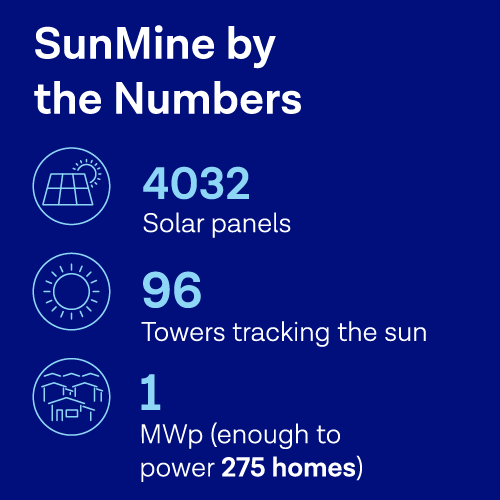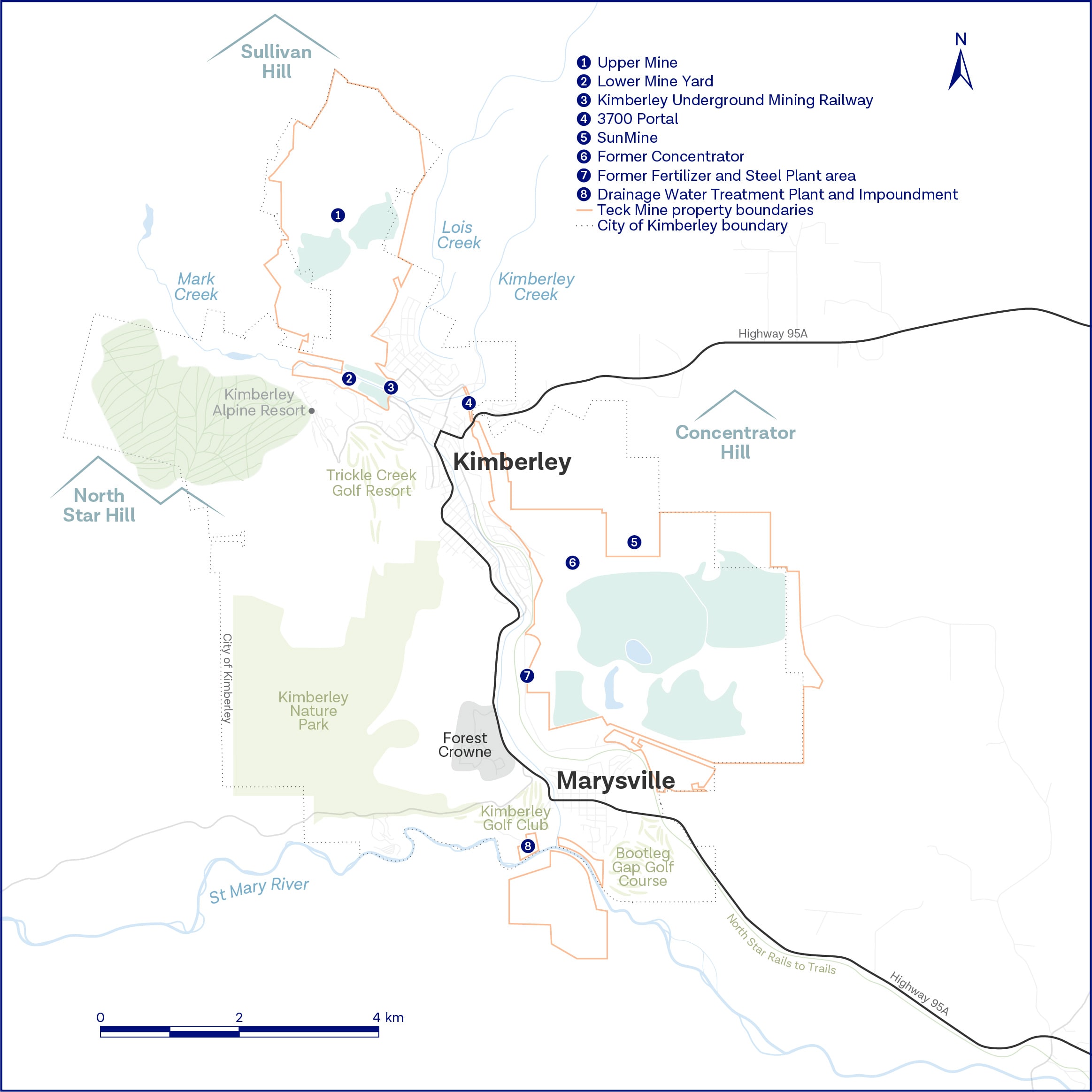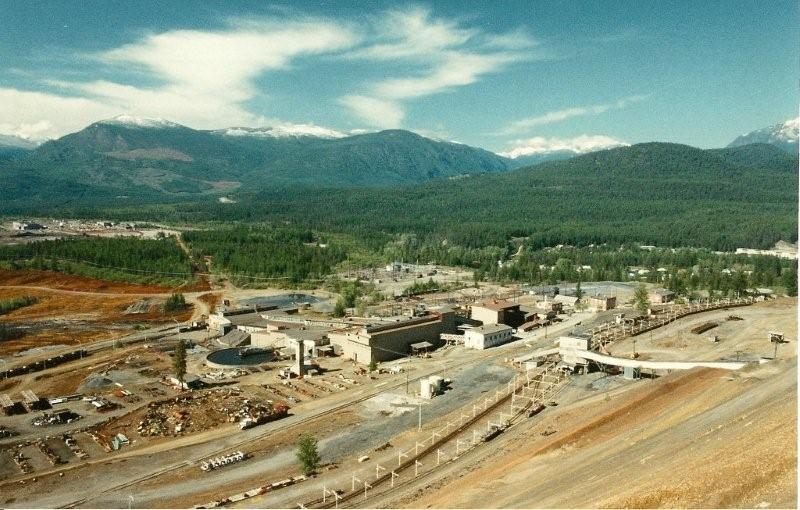Since closure in 2001, the Sullivan Mine has been carefully managed according to regulatory requirements, Teck’s own standards and the standards of the Mining Association of Canada. Employees and contractors are required to monitor post-closure conditions and operate site infrastructure, such as the water management and treatment systems. The Ministry of Environment and Climate Change Strategy and the Ministry of Energy, Mines, and Petroleum Resources provide regulatory oversight, and environmental and geotechnical monitoring and reporting requirements are contained in permits issued by these agencies to ensure closure objectives are met.
The Sullivan Mine employs more than 20 employees and contractors. Additional contractors and consultants are also routinely on site to conduct environmental and geotechnical monitoring, monitor the reclamation progress, manage invasive plants, complete forestry interface work for fire protection, and complete upgrades to site infrastructure. We have an active comprehensive management program in place and continue to work to address challenges related to more than 100 years of active mining at the site. The office at the Sullivan Mine also has employees and contractors who manage other Teck legacy sites in Canada.
A significant number of Teck employees, as well as contractor and suppliers live and work in Kimberley, contributing to the ongoing responsible management the now-closed Sullivan Mine. Our team takes great pride in maintaining strong community partnerships.
SunMine
Teck expanded its post-mining community investments beyond recreational amenities and real estate when it collaborated with a solar developer and the City of Kimberley to construct SunMine, a pilot solar panel project on Sullivan land and the first solar power plant in Western Canada to connect to the power grid.
 SunMine is truly a community endeavor. The City of Kimberley initially co-financed and owned SunMine while Teck provided the land and donated $2 million to the project. In January 2020, Teck announced the purchase of SunMine from the city of Kimberley. BC Hydro purchases the solar-generated electricity.
SunMine is truly a community endeavor. The City of Kimberley initially co-financed and owned SunMine while Teck provided the land and donated $2 million to the project. In January 2020, Teck announced the purchase of SunMine from the city of Kimberley. BC Hydro purchases the solar-generated electricity.
Electricity generated from SunMine is used to offset power needs at the Sullivan Mine, and any surplus energy is added to the grid. In a news release announcing the purchase, Teck stated, “Development of the SunMine aligns with Teck’s approach to working with stakeholders to develop post-mining land uses, from wildlife habitat to economic diversification.” Teck is also seeking other opportunities to maximize the SunMine facility and investigate renewal energy technologies for the Sullivan Mine and other Teck operations.
Teck Public Access Boundaries
For your safety and ours, please observe the no entry, no hunting and no shooting boundaries at Teck’s Sullivan operations. See a detailed map of the restricted access boundaries.
Land Management
Teck continues to maintain over 3,000 hectares of private property in and around the City of Kimberley. Most of this land base is forested, and management activities include invasive plant treatments, forest management, and ongoing agreements with local organizations. Outside city limits, Teck has worked with conservancy groups and the Crown since the late 1990s to establish the Wycliffe Conservation Complex, a 1,000-hectare corridor that links the St. Mary River to Crown land in the north.
.jpg)
In 2018, Teck donated $600,000 to the Nature Conservancy of Canada to create an ongoing management fund for these lands. In cooperation with the conservation groups, Teck currently allows limited recreational access to roughly 450 hectares of land adjacent to the Conservation lands.Forest management is an important aspect of land management to reduce wildfire risks in and around Kimberley, and each year Teck treats between 30 to 50 hectares of forested land. Treatments include removal of ladder fuels within the forest; these fuels are typically small diameter trees and low branches. This activity opens the forest floor and allows shrubby and deciduous plants to flourish. After treatment, the forest ecosystem is improved and wildfire hazard is greatly reduced. Additionally, invasive plant treatments are routinely administered around the mine and other properties around Kimberley. In 2019, Teck lands around Forest Crowne was added in partnership with Nupqu Development Corp., and this area is now part of regular inventories and treatments.
In 2019, Teck partnered with the Kimberley Trail Society (KTS) to formalize the use and maintenance of popular hiking and mountain biking trails located on Teck property within Kimberley city limits. Teck is also a Platinum sponsor of the KTS to ensure that these trails are kept safe and fun for years to come.


.jpg)

.jpg)
.jpg)
 SunMine is truly a community endeavor. The City of Kimberley initially co-financed and owned SunMine while Teck provided the land and donated $2 million to the project. In January 2020,
SunMine is truly a community endeavor. The City of Kimberley initially co-financed and owned SunMine while Teck provided the land and donated $2 million to the project. In January 2020, .jpg)





